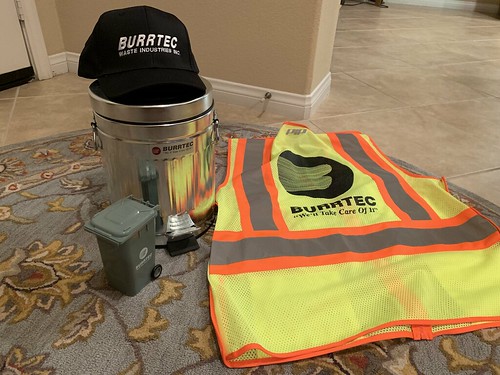S than have been infants in the Closer group of Experiment 2; no
S than have been infants inside the Closer group of Experiment two; no such differences had been observed in Opener groups across Experiments (F,38 .46, p..50, gp2 .0). Lastly, individual infants’ tendency to look longer to New Purpose versus New Path events in across all situations revealed a similar marginallysignificant interaction (Pearson x2 (3) 6.65, p .08); this interaction is present when comparing the Closer situations only (Pearson x2 two.85, p .09), but not when comparing the Opener situations only (Pearson x2 0, p ). Although these crossexperiment interactions are all marginal, they commonly assistance the considerable findings from Experiment : only these infants who viewed a claw cause a PubMed ID:https://www.ncbi.nlm.nih.gov/pubmed/22725706 damaging outcome subsequently attended towards the claw’s objectdirected action as even though they had attributed agency to it, seeking longer when the claw “changed its mind” than when the claw changed its path of motion; this pattern of final results was observed employing both parametric and nonparametric tests.Crossexperiment comparisonsEvery infant in Experiments and two viewed familiarization events involving a claw that either opened or closed a box, and 2,3,4,5-Tetrahydroxystilbene 2-O-D-glucoside habituation and test events involving a claw reaching for a ball and a bear. Thus, it truly is probable to examine infants’ patterns of focus across Experiments.Basic The data reported right here add to a developing literature suggesting that human infants are extremely attuned towards the social world. Previous studies have shown that infants swiftly distinguish agents from nonagents [2,23,67], purpose about agents’ goaldirected behaviors [24,37,68], evaluate the actions of agents primarily based particularly on their  prosocial and antisocial nature [63,69,7], and also privilege the intentional content material of prosocial and antisocial acts more than the distinct outcomes these acts are linked with [72,73]. The existing studies provide evidence that for infants, as for adults, not just do judgments of agency influence social evaluations, but social evaluations influence judgments of agency. Across two experiments, sixmontholds who observed a mechanical claw inflict a unfavorable outcome (blocking an agent’s aim) subsequently attributed agency to that claw, whereas infants who observed a claw inflict a constructive outcome (facilitating a target), or who saw a claw carry out physically identical but nonvalenced actions (opening or closing a box) did not. Such findings are consistent with recent operate with adults demonstrating that even though neutral, everyday events are routinely attributed to physical forces or random chance by adult observers, excessively negative outcomes are inclined to be attributed to malevolent external agents [4]. Adding to earlier developmental evidence for a basic “negativity bias” in which adverse social agents are privileged in infants’ and children’s memory, mastering processes, and evaluations (see [46] for a overview; see also [502]). Within the existing studies infants made use of damaging social outcomes to identify irrespective of whether a particular causal entity is or will not be an agent within the initially location. These results suggest that infants’ agencyrepresentations involve extra than just the physical and spatiotemporal properties of an object and its actions, and consist of an analysis of its socialrelational interactions (see also [74]). Proof for a unfavorable agency bias in both adults and 6monthold infants raises questions in regards to the function of experience in its emergence. Particularly, when it seems unlikely that infants’ tendency to attribute agency towards the.
prosocial and antisocial nature [63,69,7], and also privilege the intentional content material of prosocial and antisocial acts more than the distinct outcomes these acts are linked with [72,73]. The existing studies provide evidence that for infants, as for adults, not just do judgments of agency influence social evaluations, but social evaluations influence judgments of agency. Across two experiments, sixmontholds who observed a mechanical claw inflict a unfavorable outcome (blocking an agent’s aim) subsequently attributed agency to that claw, whereas infants who observed a claw inflict a constructive outcome (facilitating a target), or who saw a claw carry out physically identical but nonvalenced actions (opening or closing a box) did not. Such findings are consistent with recent operate with adults demonstrating that even though neutral, everyday events are routinely attributed to physical forces or random chance by adult observers, excessively negative outcomes are inclined to be attributed to malevolent external agents [4]. Adding to earlier developmental evidence for a basic “negativity bias” in which adverse social agents are privileged in infants’ and children’s memory, mastering processes, and evaluations (see [46] for a overview; see also [502]). Within the existing studies infants made use of damaging social outcomes to identify irrespective of whether a particular causal entity is or will not be an agent within the initially location. These results suggest that infants’ agencyrepresentations involve extra than just the physical and spatiotemporal properties of an object and its actions, and consist of an analysis of its socialrelational interactions (see also [74]). Proof for a unfavorable agency bias in both adults and 6monthold infants raises questions in regards to the function of experience in its emergence. Particularly, when it seems unlikely that infants’ tendency to attribute agency towards the.